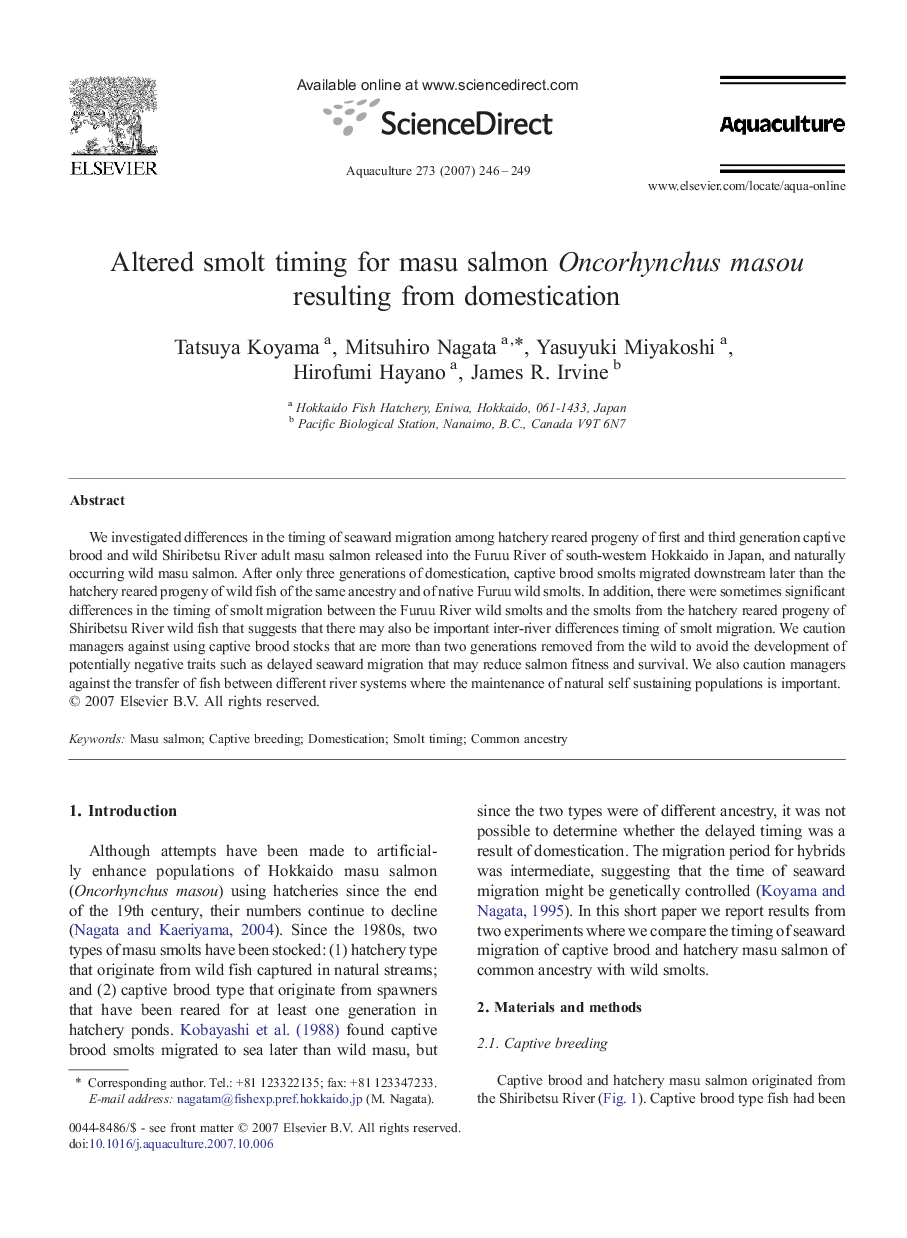| Article ID | Journal | Published Year | Pages | File Type |
|---|---|---|---|---|
| 2425104 | Aquaculture | 2007 | 4 Pages |
Abstract
We investigated differences in the timing of seaward migration among hatchery reared progeny of first and third generation captive brood and wild Shiribetsu River adult masu salmon released into the Furuu River of south-western Hokkaido in Japan, and naturally occurring wild masu salmon. After only three generations of domestication, captive brood smolts migrated downstream later than the hatchery reared progeny of wild fish of the same ancestry and of native Furuu wild smolts. In addition, there were sometimes significant differences in the timing of smolt migration between the Furuu River wild smolts and the smolts from the hatchery reared progeny of Shiribetsu River wild fish that suggests that there may also be important inter-river differences timing of smolt migration. We caution managers against using captive brood stocks that are more than two generations removed from the wild to avoid the development of potentially negative traits such as delayed seaward migration that may reduce salmon fitness and survival. We also caution managers against the transfer of fish between different river systems where the maintenance of natural self sustaining populations is important.
Related Topics
Life Sciences
Agricultural and Biological Sciences
Aquatic Science
Authors
Tatsuya Koyama, Mitsuhiro Nagata, Yasuyuki Miyakoshi, Hirofumi Hayano, James R. Irvine,
